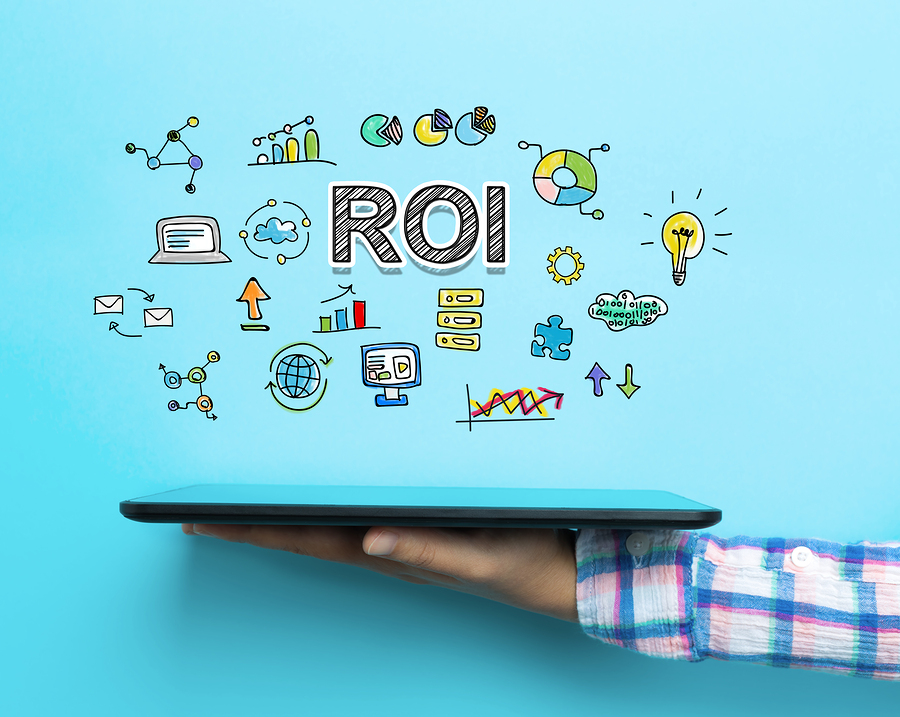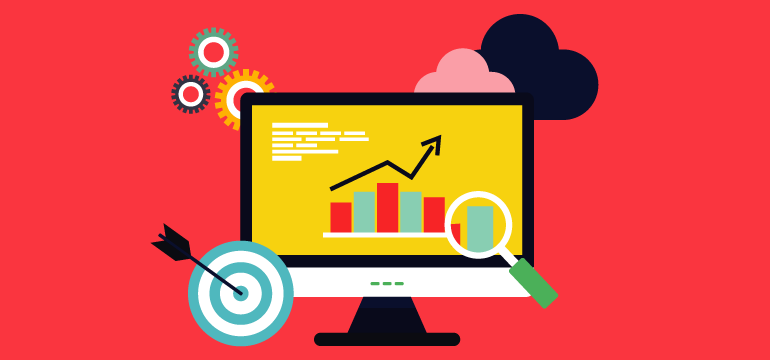We all know social media is a powerful tool that has transformed the way brands interact with their audiences. But how do we know if our social media marketing efforts are paying off? This is where social media’s Return On Investment (ROI) comes in. Social media ROI is the measurement of the value that brands generate from their social media activity. It’s important because it helps marketers understand how their social media activity is directly contributing to their business objectives.
However, measuring social media ROI can be a daunting task, especially with the constantly evolving algorithms and metrics of different platforms. One of the common challenges faced by marketers in measuring ROI is the difficulty in quantifying the qualitative aspects of social media engagement. It can also be tough to set clear goals and KPIs for different platforms and campaigns. Despite these difficulties, measuring social media ROI is crucial for marketers to make informed decisions and create strategies that drive maximum returns for their business.
Table of Contents
ToggleTypes of Social Media ROI Metrics
Social media ROI metrics are an essential component of measuring the success of your marketing campaigns. There are four different types of social media ROI metrics, namely, reach metrics, engagement metrics, conversion metrics, and brand metrics. Reach metrics determine the size of your audience and track how many people are viewing your content. These metrics include follower count, impressions, clicks, and views. Engagement metrics track how your audience interacts with your content and includes metrics like likes, comments, shares, and retweets. Conversion metrics measure the number of people who take an action that your content intends them to take and include metrics like clicks to your website, leads, and sales.
Finally, brand metrics track how your brand is perceived and include metrics like sentiment, brand awareness, and customer loyalty. Choosing the right metrics for your campaign depends on your goals and objectives. Ensure that you set SMART goals that align with your overall business objectives and select metrics that fit the specific campaign. Benchmarking and tracking progress ensures that you identify when something is not working and helps you to be flexible in changing your approach. Using tools is crucial in measuring social media ROI. Some popular free and paid tools in the market include Google Analytics, Hootsuite Insights, Sprout Social, and SEMRush. While each tool has its pros and cons, it is essential to choose one that fits your budget and requirements.
Lastly, measuring social media ROI on different platforms requires different metrics. Facebook metrics will differ from Instagram metrics, and LinkedIn metrics will differ from Snapchat metrics. It is, therefore, crucial to select the right metrics for each platform to optimize your campaigns.
How to Set Goals and KPIs for Different Metrics
Setting goals and KPIs for different metrics is a crucial step in measuring social media ROI. This requires aligning social media goals with overall business objectives using SMART goals. SMART goals are Specific, Measurable, Attainable, Relevant, and Timely. These goals help marketers to focus on achievable targets that contribute to the bigger picture. Choosing the relevant metrics for different campaigns is also essential in setting goals and KPIs. Reach metrics, engagement metrics, conversion metrics, and brand metrics are the different types of social media metrics that determine ROI.
Reach metrics measure brand exposure, engagement metrics measure interactions, conversion metrics measure actions taken by the audience, and brand metrics measure sentiments towards the brand. Benchmarking and tracking progress help marketers know the effectiveness of social media campaigns. Knowing the current state of ROI enables marketers to make data-driven decisions that positively impact their businesses. Having reliable data is key in setting goals and KPIs for different metrics. That said, aligning goals with business objectives is crucial for marketers. You don’t want to move the needle in one area, but the efforts have zero or negative effects on the business outcomes. With the right metrics and adequate data, marketers can easily see the rewards of a successful social media campaign.
Plus, they can identify potential problems or roadblocks, allowing them to quickly pivot if needed. So, carefully selecting the right metrics, using SMART goals, and aligning them with business objectives is critical to the success of any social media campaign. Ultimately, the ultimate aim is to contribute to business goals, making this approach the most effective.
Tools for Measuring Social Media ROI
Let’s talk about measuring social media ROI with tools. There are a plethora of options out there – both free and paid – and it can be overwhelming to choose the right one. But fret not, we’re here to help! Free tools can be an excellent starting point for small businesses or solopreneurs. Facebook Insights is a great choice for checking engagement metrics like post reach, reactions, and comments. Twitter Analytics provides a range of data, including tweet performance, follower demographics, and engagement rates.
Google Analytics can provide an overview of website traffic driven by social media. Paid tools often come with more robust features, such as competitor benchmarking and custom reporting. Some of the most popular ones are Hootsuite Insights, Sprout Social, and Buffer Analyze. These paid tools can be highly beneficial for large businesses with multiple campaigns running simultaneously. When it comes to comparing top tools in the market, Hootsuite Insights and Sprout Social seem to dominate the market. Hootsuite is a one-stop shop for social media management with excellent analytics tools that are perfect for tracking ROI. Sprout Social, on the other hand, offers customizable reports and detailed insights into audience engagement. So, what are the pros and cons of each tool?
Well, free tools are great for small businesses, but they can’t match the powerful features of paid tools. Paid tools provide much more detailed insights, but they can be expensive, especially for small businesses. In conclusion (oops!), it’s essential to consider your budget and business needs when selecting tools to measure social media ROI. You may not need the most advanced platform out there, but a decent tool that aligns with your goals and KPIs can provide you with the insights necessary for growth.
Measuring Social Media ROI in Different Platforms
Facebook, Twitter, LinkedIn, Instagram, and Snapchat are the leading social media platforms used by businesses to reach their target audience. Measuring the ROI of each platform varies depending on the advertising objective. Facebook is the largest social media platform with a broad audience. Metrics like post engagement and reach, video views, and clicks on the website are used to measure ROI. Twitter is ideal for businesses looking to improve brand awareness by gaining more followers, retweets, and favourites.
LinkedIn mainly supports B2B advertising, with metrics like clicks, impressions, and engagement being crucial in measuring the success of the campaigns. Instagram’s high level of engagement and organic reach makes it a perfect platform for businesses looking to boost engagement and brand awareness. Metrics like the number of followers, likes, comments, and daily impressions are commonly used to measure ROI.
Snapchat, on the other hand, offers better engagement for businesses targeting millennials and Generation Z. Popular metrics for measuring ROI include audience reach, video views, website clicks, and user-generated content. Knowing which metrics to use to determine ROI for each platform is vital to the success of any social media campaign. Businesses need to understand their goals and target audience to follow the appropriate measurement strategies on each platform.
Tracking and Reporting Social Media ROI
Tracking and Reporting Social Media ROI: When it comes to tracking and reporting social media ROI, there are a few key points to keep in mind. Firstly, building custom reports is essential for measuring the success of your social media campaigns. You want to make sure you’re tracking the right metrics that align with your overall objectives. Additionally, choosing the right frequency of tracking is important to ensure you’re catching any changes in the data and can adjust your strategy accordingly. Sharing data with stakeholders is also crucial.
Your team needs to be on the same page about the successes and challenges you’re facing. Whether it’s through a weekly email or a monthly meeting, make sure you’re communicating the data effectively. And lastly, making data-driven decisions is the ultimate goal. Your metrics should inform your decision-making, and if they’re not, you need to re-evaluate your approach. Overall, tracking and reporting social media ROI can be overwhelming, but with the right tools and approach, it can be a valuable aspect of your marketing strategy.
Conclusion
Congratulations! You now have a better understanding of social media ROI and how to measure it effectively. Remember, setting SMART goals and aligning them with your overall business objectives is crucial. Choose relevant metrics for different campaigns, and use the right tools to track and report progress. Don’t forget to share your data with stakeholders, and always make data-driven decisions.
By using these strategies, you can maximize your marketing returns and stay ahead of the competition. Keep measuring, analyzing, and optimizing your social media ROI, and you’ll be well on your way to achieving success!
Read Next: 12 Ways To Build Your Personal Brand On Social Media









